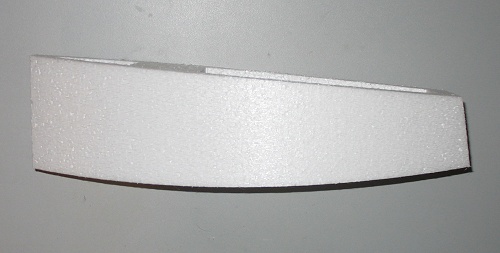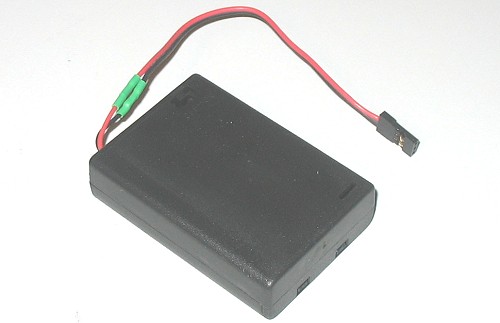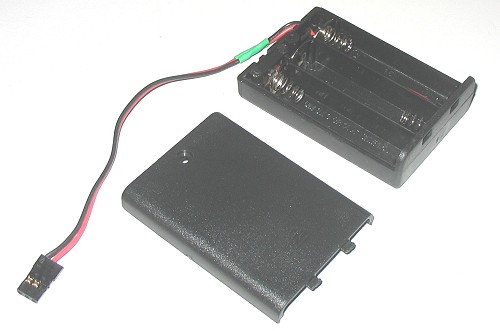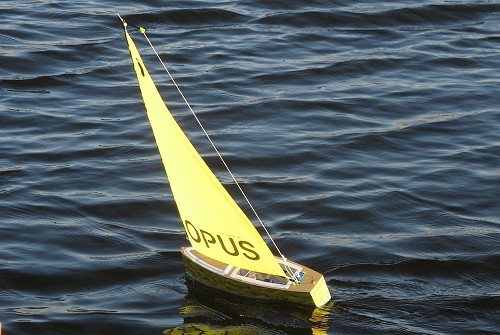
Over the winter I have been developing a different style of una rig and a new footy to test it on. Early talk about flexible rigs and their benefits for use on footys centred around the flexible mast but apparent complexities in their design meant there was little development in that direction. Later the ‘McRig’ came on the scene and it’s simplicity was infectious and it has become rightly popular. Rather than the mast bending it used a torsion bar for the mast pivot allowing the whole rig to flex from it’s base. I wanted to go back to those earlier discussions and see if I could make a bendy mast rig work.
In developing OPUS I was inspired by the una rig on the Laser dinghy. The curved mast on the Laser is shaped by the sail pocket. I decided to create the mast curve with a backstay instead which allows the mast to be shaped independant of the sail thus allowing some sail camber control. A pure Laser rig would have the mast set too far forward for a short hull like the footy so I have adopted an offset pivot on the main boom so the rig now became a una swing rig. I have been careful to allow no flex at the base and boom mounting so all of the flex and gust reaction is handled by the flexible carbon mast and sail itself.
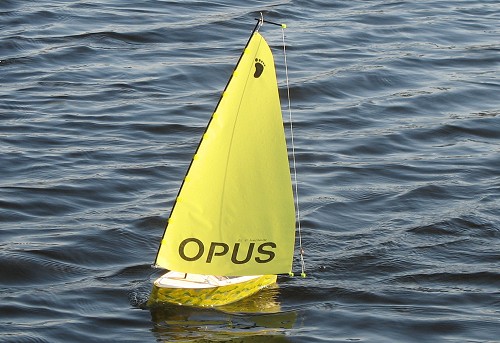
The OPUS rig was tested briefly in the light Fall airs here before the winter freeze set in. Over the winter the idea was developed further and hand held tests in varying winds were photographed and studied to see how the rig was behaving. Clearly the rig worked nicely as a swing una rig which would make it a nice rig to use were it simply a stiff unit. What I was looking for was how would it behave in gusts as this is becoming a key element in racing footy design.
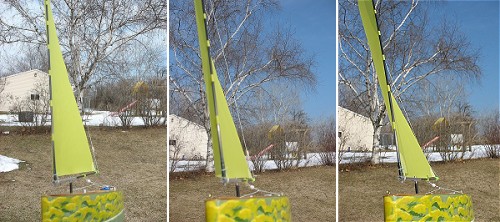
steady breeze stronger gust reaction
Well the results looked good, in a gust when the rig is close hauled or in a reaching position the mast bends away to leeward as might be expected but it also curves back more under the action of the sail and induces more twist in the sail. We know that bending away and dumping some wind in a gust is good but increasing twist is possibly even better. The movement adds upper drive due to the twist while dumping air and also keeps the lower area of the sail as set and driving the boat forward.
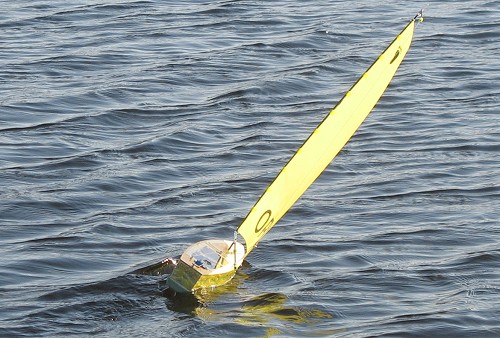
‘Laser’ style swing rig in action on the Dragon prototype.
The ScaleSailing Dragon/OPUS combo saw water again on the Friday of the NCR in Orlando, FL. I took the opportunity to sail the boat and with a good but variable wind blowing was able to see how the newest version of the rig behaved on water compared to land in a variety of wind strengths. It looked good on the water, I particularly like the elegant shape of the curved mast which was different from everything else on the water that day. The sail approximates to an elliptical shape which is typically considered to be an efficient planform. Tacking was quick and easy with the sail filling quickly and the boat accelerating away well. I think this initial sail size I have chosen handled the stronger wind well and should make a good ‘working’ rig to cover a range of conditions. Being used to sailing two sailed sloop rigs I did love how easy it was to turn on to the run downwind and not have to hope the jib popped out opposite to the main. Yet there was no odd behaviour as is sometimes reported for the classic two sail swing rig set up. I am prepared at this stage to say that this OPUS rig works and works well. Clearly there will be things to learn in tuning it, controls available are mast shape via the backstay, sail foot shape and initial twist shape via sliding rings on the boom.
As an aside, construction of the prototypes proved difficult to get the required accuracy so I had a friend make a special tool which now allows me to make the boom/pivot/mast stub assembly quickly and with the required accuracy. When the ScaleSailing OPUS rig comes into production the boom assembly will be supplied ready made along with a prefabricated mast/masthead and sail ready to simply plug together and play.
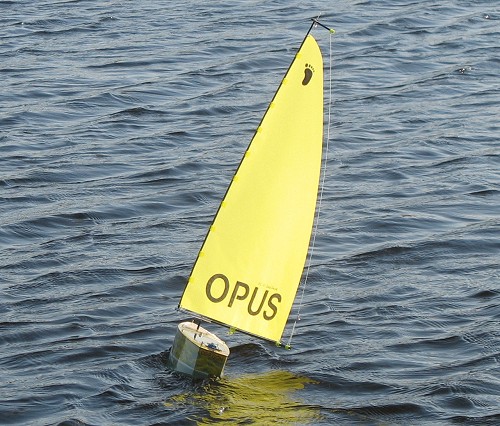
All content of this blog including text, photographs and the model designs are the sole property of Graham McAllister Designs.
Copyright 2009 by Graham McAllister Designs.
Read Full Post »

